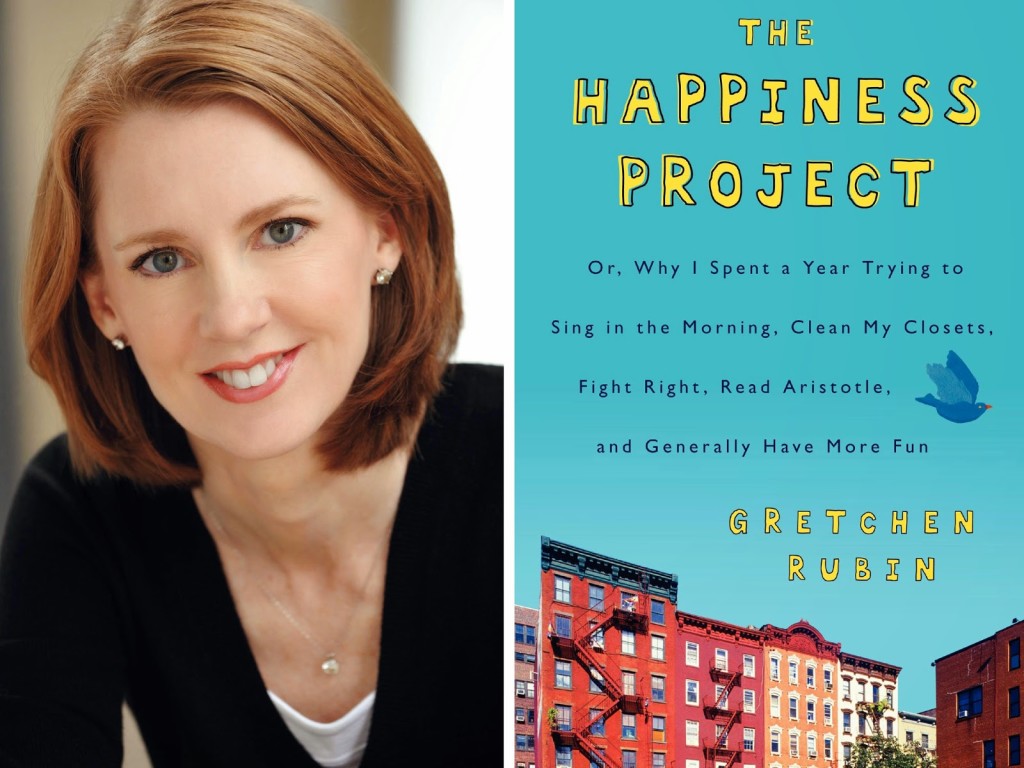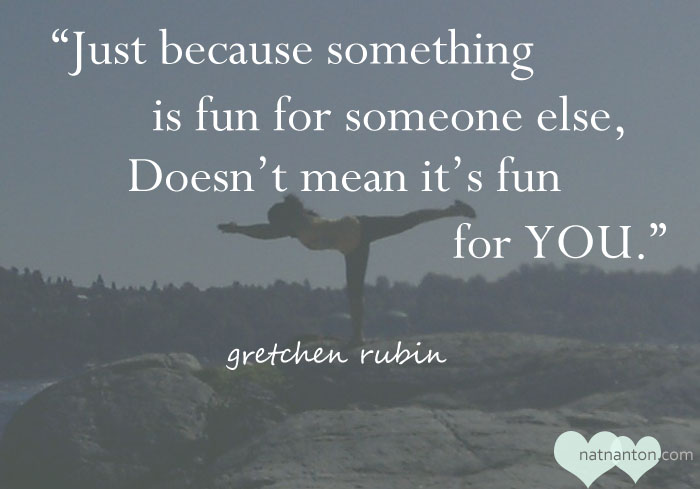What is the secret sauce of happiness? Do we need to go on an Eat, Pray, Love expedition to find it?
Well, not according to Gretchen Rubin in her bestselling book The Happiness Project.
Chronicling 12 months of her “test driving the wisdom of the ages”, Rubin’s memoir resulted from an epiphany – one where she realised that “the days are long, but the years are short”.
Before I talk about her year long pursuit of happiness, let us first look at her 12 commandments of happiness.
Gretchen’s 12 Commandments
Defined as “overarching principles” for happiness, Gretchen’s principles of happiness are laid out as follows:
- Be Gretchen
- Let it go
- Act the way I want to feel
- Do it now
- Be polite and be fair
- Enjoy the process
- Spend out
- Identify the problem
- Lighten up
- Do what ought to be done
- No calculation
- There is only love
Sounds simple right? Well, keeping them all can be quite a bitch at times.
As you read the book, you would begin to realise that Rubin struggled with keeping them. Doesn’t this sound like the rest of us?
However, it was good to learn and discover how she took pains to align herself back to these happiness truths as soon as possible.
Secrets of Adulthood
Beyond the 12 commandments, Rubin also came out with a longer list titled her “Secrets of Adulthood”. These were lessons she picked up as she grew up, and include the following:
- It’s okay to ask for help
- Do good, feel good
- By doing a little bit each day, you can get a lot accomplished
- You can choose what you do; you can’t choose what you like to do
- If you can’t find something, clean up
- If you’re not failing, you’re not trying hard enough
- You can’t profoundly change your children’s natures by nagging them or signing them up for classes (I love this one!)
To be honest, I like this list better than the 12 commandments. In Rubin’s case, both the commandments and the “secrets” helped her in living out her resolutions over the year.
So what did she do over the 12 month period? Let’s find out.
11 Happiness Resolutions
Covering each month of the year except one month which was her “break”, Gretchen lived each month according to what she termed as her “happiness resolutions”.
In her book, these resolutions were habits and behaviours aimed at creating a happier life. One for each month of the year, the resolutions built on one another.
Let me run through them very quickly:
- Boost Energy (Vitality): The first step in the happiness year involves decluttering our lives, going to sleep earlier, exercise, tackling of nagging tasks, and acting with more energy in our lives.
- Remember Love (Marriage): Love between couples form an important bedrock for happiness. To improve this, we should quit nagging (super tough!), do something without expecting praise or appreciation, fight fair, avoid dumping, and give proofs of love.
- Aim Higher (Work): Taking up a huge chunk of our time, work is vital part of happiness. Launch a blog (yay), take failure into your stride, ask for help if necessary, work smart by improving productivity, and enjoy the moment.
- Lighten Up (Parenthood): Kids are a big part of our happiness. Spend time playing with them, sing in the morning, acknowledge how they feel (rather than steamroll over them… Oops), be a treasure trove of happy memories (photo albums rock), and take time for family projects.
- Be Serious About Play (Leisure): Surprisingly not as easy as it sounds. The key here is to be yourself when you have fun, take time to be silly, go off track along new paths, and start a collection.
- Make Time for Friends (Friendship): Building relationships with friends and family is key. Remember birthdays, be generous, show up for occasions, avoid gossiping and make three new friends (real ones, not just virtual ok?).
- Buy Some Happiness (Money): Money can bring happiness if you spend it well. Indulge in a modest splurge, buy what’s needed, spend out (ie don’t always think of the return), and give something up.
- Contemplate the Heavens (Eternity): Spiritual enlightenment is a key part of happiness. Read memoirs of catastrophe, keep a gratitude notebook (one sentence per day in Rubin’s case), or imitate a spiritual master.
- Pursue a Passion (Books): I love books as much as Rubin (maybe slightly less) so I have to agree with this. Write a novel (whoa!), make time to do your hobby, forget about results (no KPIs please), and master a new technology.
- Pay Attention (Mindfulness): Inspired by Zen Buddhism, Rubin’s resolution include meditating on koans (a question or statement that can’t be understood logically, read this for more), examining True Rules (concrete real life lessons), stimulating the mind in new ways, and keeping a food diary (to track calories).
- Keep a Contented Heart (Attitude): Contentment is happiness to come. Here, we are implored to laugh out loud, use good manners, give positive reviews, and find an area of refuge (for me, its a good book usually).
Beyond the resolutions above, Rubin also had a few Splendid Truths which were liberally shared throughout the book. The most important is probably the first, namely this:
“If I want to be happier, I need to look at my life and think about feeling good, feeling bad, and feeling right, in an atmosphere of growth.”
What this means is that happiness is about knowing what makes you happy, what makes you unhappy (and changing that), and how you can stretch yourself and grow.
Happiness is a Journey, not a Destination
Skillfully blending her real life encounters with scientific facts, philosophical outtakes, and personal musings, Rubin’s compellingly written prose draws you in. What’s interesting was how she turned ordinary daily encounters into perspectives on happiness.
Indeed, I couldn’t help nodding my head vigorously in agreement as I flipped page after page.
In my mind, the most memorable lesson is probably the one where we are encouraged to just be ourselves. Ultimately, the only measure of happiness that we need to take note of is how we ourselves feel.
At the end of the day, true happiness isn’t what others say we ought to do or feel, but what we ourselves are comfortable with. That is something for us to remember, each and every day of our lives.
Courtesy of Nat Nanton


